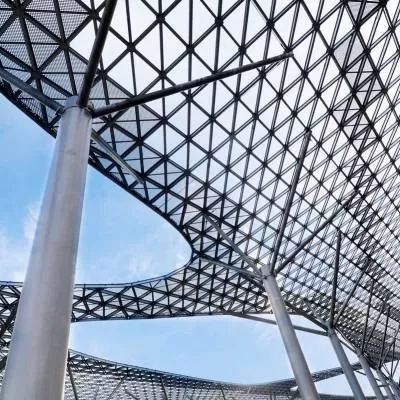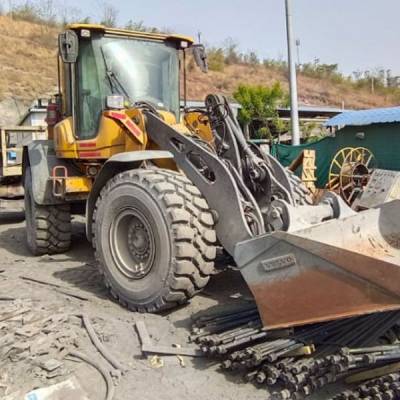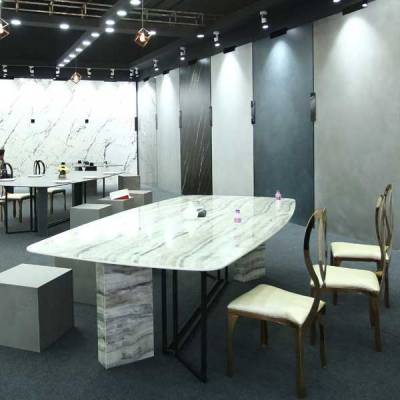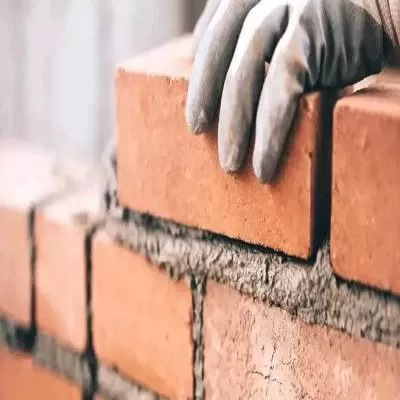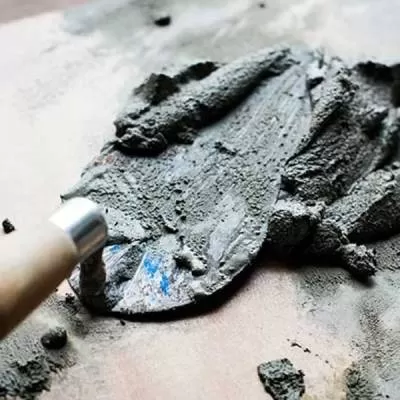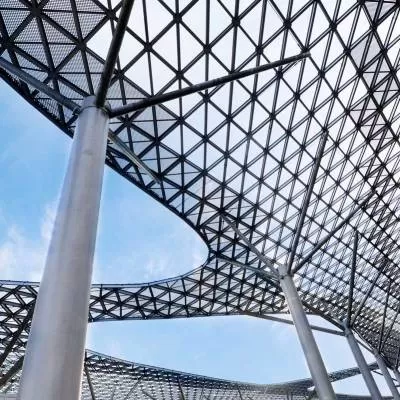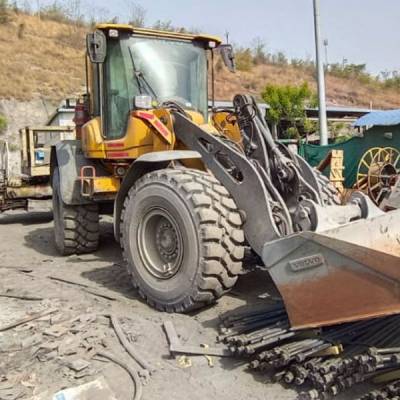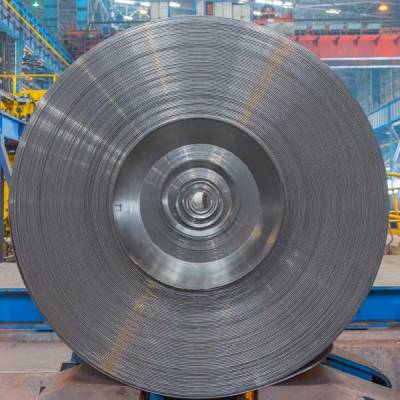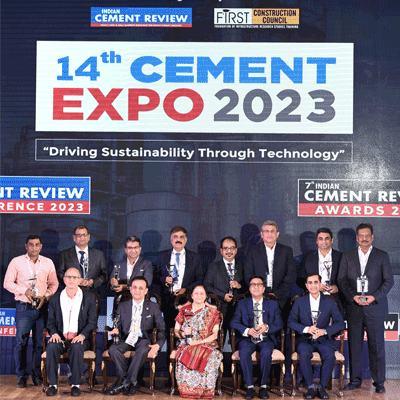- Home
- Building Material
- Cement
- Piling Back
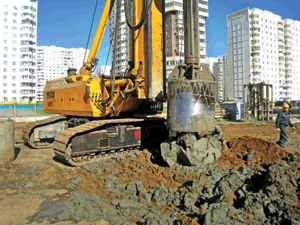
Piling Back
Where demand for foundation equipment is concerned, last year was a washout. Is the current year bucking that dismal performance?
´Demand has improved by about 25 per cent vis-a-vis last year,´ says Uthpala Suvarna, Director-Sales & Service, Suretech Infrastructure Pvt Ltd.
´We are getting more inquiries this year than last year,´ says DV Brahme, Regional Manager, Mait India Foundation Equipment Pvt Ltd. ´Our feeling is that sales will also be higher this year.´
´Before demand picks up for new rigs, rigs lying idle for want of work must be consumed in the market,´ says Jagpal Singh Lotay, Managing Director, Bauer Equipment India Pvt Ltd. ´Close to a third of the total rigs in India were lying idle a year ago. Demand for these rigs has picked up somewhat in these past few months. Our first quarter this year was definitely better than last year. We expect demand to pick up further after elections or monsoons with the announcement of new projects and better liquidity.´
Key trend
A key industry trend is that offshore construction and high-rise building foundations are necessitating deeper piles. So, how deep is deep? ´Whereas overseas deep piling goes down to 200 m, in India, it has reached 70 m,´ says Suvarna.
´High-rise construction in soft soil where rock is not encountered may require friction piles with a length in excess of 25 to 30 m,´ says Brahme. ´The actual length of the piles depends on the soil strata and load of the structure. Piling depths for projects in India are touching 70 m to 100 m with over 2-m diameter. This is growing demand for MAIT's biggest rig model HR 420-800 and the associated 80 m to 110-m long kelly bar.´ ´Slowly, deeper and bigger diameter piles requiring technologically advanced equipment with additional safety features are being explored in a lot of new projects,´ agrees Lotay. Bauer´s current range of rigs varies from 12 tonne to 50 tonne, and can pile up to 82-m depth and 3,000-m diameter. A recent achievement was first rock socketing for a pile of 2,500-m diameter in Chennai.
Atlas Copco offers a comprehensive range of down-the-hole (DTH) products in the hole range of 12ö (305 mm) to 120ö (3,048 mm), which are well suited to rapidly drilling large diameter quality holes in solid rock typically for foundation piling for large structures. Cluster drills are made up of purpose-built multiple (four or more) Secoroc hammers, each fitted with Secoroc bits.
´Worldwide, we have successfully used the cluster drill for drilling holes of diameter between 762 mm and 2,235 mm,´ explains Ashahad Nizami, Key Account Manager, Atlas Copco Mining and Rock Excavation Technique. ´In India, we have used the cluster drill at a Chennai metro site to drill a hole of 2,010-mm diameter to a depth of 30 m. The next round of drilling will soon be commencing at the same site.´
Opening market
The Indian foundation equipment market has seen the influx of players from the West and the East. Major European companies Soilmec, Mait and Bauer are well-established, and even have their own marketing and service set-up for their piling rigs. Some overseas vendors have chosen to partner with Indian companies to enter the market. International Construction Equipment (ICE) of Netherlands has a tie-up with Suretech Infrastructure, ThyssenKrupp Bautechnik of Germany has partnered with Nathani Industrial Services and Dawson Construction Plant Ltd has associated with Sugam Infrastructure.
Such partnerships can prove to be very useful for the incomer and present major opportunities for Indian equipment companies. ´The biggest advantage to overseas vendors in tying up with Indian companies is access to local knowledge and an established service setup,´
observes Suvarna.
Srinagesh Mandala, Director, India Operations, Continex, helped Dawson Construction Equipment find a partner in Sugam Infrastructure and represented Dawson in its early days in India. He believes the biggest challenges for overseas providers are to correctly time their entry in the Indian market and become aware of its intricacies to fulfil the objectives of cutting costs and breaking even faster. ´Most of our customers have experience of Europe or China or both and can take time to adjust to the demands of Indian market,´ he explains. ´Business cycle times are longer in India and it may be difficult at times to sustain the momentum. Also, the diversity as well as the business culture that exists and differentiates each of the big OEMs here needs to be addressed.´
Differentiating factors
Chinese rig vendors have had a presence in the Indian piling rig market for over six to eight years but have not been able to make a mark. Brahme estimates that all the Chinese rig vendors put together hold less than 5 per cent of the Indian market share. Certainly, Chinese vendors have an edge over their competitors because of better pricing. But they have not been able to widen their client base. Why is that? ´The lower prices of Chinese models can bring in sales the first time and can be advantageous in the very short term,´ says Brahme. ´But if the product is not reliable or is very high-maintenance, clients start looking for better alternatives. Reliability is a non-negotiable criterion. We actually have clients who prefer to buy used MAIT rigs, say five to six years old, to keep costs low than to invest in new Chinese rigs.´
Suvarna believes European models are proven to be sturdy, reliable and of superior quality.
´The Indian piling rig market is home to European and Chinese models,´ opines Amita Wagh, General Manager, Drilltech Engineers Pvt Ltd. ´The European models are excellent and reliable.´
Essentially, technology, maintenance needs and pricing are the key differentiators in any situation. ´But these three factors must be considered together,´ cautions Brahme. Technology is always the most sought-after parameter. ´However, if a high-tech product comes at a very high price and the maintenance cost over the lifetime of the product is also very high, customers do not see it as being commercially viable,´ observes Brahme.
Bauer is differentiating itself by bringing the synergy of offering technologically safer equipment and technological expertise to clients. ´We get involved in the planning and designing of projects, help customers follow the best methodology for the execution of projects, conduct technical seminars, train site supervisors, technicians and operators, and support the functioning of equipment by maximising uptime,´ shares Lotay. ´We are privileged to access some latest work methods in underground metro stations or building cut-off walls in hydro projects.´
As the market becomes more populated, vendors must pay closer attention to differentiating themselves from their competitors.
Desired differentiators
According to buyers, there is scope for vendors to further differentiate their machines on features or technology. Not that existing rigs in the market are not sophisticated and feature-rich. ´But some desirable features are still missing,´ says Jayanta Basu, Vice President, ITD Cementation India Ltd, ´such as an option to set the verticality of trench in pile or diaphragm wall and one to record the actual data of soil profiles encountered during trenching for future use. Software to measure the hydro sound dampers´ consumption and figure out if it is in sync with the machine usage should be made a standard feature.´
Interestingly, the downturn has presented users opportunities to learn about the features of accessories of different brands than the piling rig they have deployed. According to Wagh, ´Vendors have become more open to selling accessories of their brand to customers using piling rigs of another brand.´ Consequently, she has opted to buy Bauer brand rock cutting bullets and augurs for the MAIT piling rigs. Drilltech Engineers employs, and employed these to good effect.
Another big gap for smart vendors to fill is piling equipment for marine works. Marine piling happens from jack-up platforms or from barges, and makes use of a big kelly bar and higher torque to drill rock. ´Such piling rigs are few in the market,´ says Basu. Further, he explains, ´Conventional drilling in hard strata by means of the percussive method, chiselling and removing rock fragments with a bailor damages the existing strata on which piles are to be terminated. It also causes a lot of sound pollution and is painfully slow. Rotating control devices and DTH methods are becoming popular. But these machines are job-specific, which makes them an expensive proposition.
Upgrading existing rotary piling rigs so that they can also drill in hard strata would be ideal. Current kinematics (the kelly bar and its attachment with the base machine) do not allow this despite rotary piling rigs having adequate power.´ Basu also believes drilling equipment models in the beyond 25 tonne-m category are too few, saying, ´Most available machines are in the 18 tonne-m class, which presents limitations for bigger diameter piles (diameter over 1,200 mm) and deeper piles (depth over 55 m).´
Emerging avenues
A number of hydroelectric power projects are lined up in the North and the Northeast. So far, many of these have been stuck on the drawing board for want of clearances. When they get underway, Lotay expects demand to increase for rigs, cutters (hydromill), grabs micro piling, and so on. ´Construction companies will want equipment with proven productivity and longevity features, and which incorporate technological advancements and facilitate methodology improvements. Bauer has already supplied cutters and grabs to projects from Dauli Ganga in the North to Teesta in the Northeast for making diaphragm walls,´ he shares.
A related market segment that may see consolidation is the piling rig rental market. Demand-supply mismatch between jobs and equipment has led to a fall in rental rates, which in turn has lengthened the break-even cycles for foundation equipment rental companies. This situation is partly the outcome of rental companies who were into other business jumping into the attractive foundation segment during peak times (between 2008 and 2011). The newcomers had no prior experience of the foundation business or of more productive durable machines, which allow the cost to be amortised over a longer time. They amassed fleets of even semi-productive machines. ´While we do not see a long-term future for foundation equipment rental companies owning barely one or two pieces of equipment, we do see scope for medium and large rental companies to evolve into specialist foundation companies or contractors,´ says Lotay. ´This would help improve the quality of work and strengthen rentals.´
Indeed, steps to improve quality outcomes and strengthen the industry are always welcome.
Piling depths for projects in India are touching 70 m to 100 m with over 2-m diameter.
Deeper and bigger diameter piles requiring technologically advanced equipment with additional safety features are being explored in a lot of new projects.
Offshore construction and high-rise building foundations are necessitating deeper piles.
Technology, maintenance needs and pricing are the key differentiators.
Vendors have become more open to selling accessories of their brand to customers using piling rigs of another brand.
There is scope for medium and large rental companies to evolve into specialist foundation companies or contractors.
Piling and Foundation Panaroma
Source: Industry Voices
Demand has improved by about 25 per cent vis-a-vis last year.´
Uthpala Suvarna, Director-Sales & Service, Suretech Infrastructure Pvt Ltd
We have accessed some latest work methods in underground metro stations or building cut-off walls in hydro projects.´
Jagpal Singh Lotay, Managing Director, Bauer Equipment India Pvt Ltd
Photo Courtesy: Suretech Infrastructure Pvt Ltd
For Drilling Holes - Cluster Drills
Large diameter and other uses will take off in India as awareness grows of this method´s utility for demanding applications like bridge piers, footings, foundation piles, rock sockets, shafts and other vertical holes in construction projects.
Source: Atlas Copco Mining and Rock Excavation Technique
Cluster drills are even adaptable to reverse circulation and mud flush operations.
Business cycle times are longer in India and hence, it is difficult at times to sustain momentum.
Srinagesh Mandala,
Director, India Operations, Continex
Drilling equipment models in the beyond 25 tonne-m category are too few.´
Jayanta Basu, Vice President,
ITD Cementation India Ltd
- CHARU BAHRI
- Uthpala Suvarna
- Suretech Infrastructure Pvt Ltd
- DV Brahme
- Jagpal Singh Lotay
- Atlas Copco
- Ashahad Nizami
- ThyssenKrupp Bautechnik
- Nathani Industrial Services ,Dawson Construction Plant Ltd
- Drilltech Engineers Pvt Ltd
- Amita Wagh
- Jayanta Basu
- ITD Cementation India Ltd,Drilltech Engineers ,Dauli Ganga
- Jagpal Singh Lotay,Srinagesh Mandala
Demand for rigs is beginning to pick up. Is it enough to put the piling equipment market back on track? CHARU BAHRI digs up a buyer´s wishlist that could help players differentiate themselves and grow demand. Where demand for foundation equipment is concerned, last year was a washout. Is the current year bucking that dismal performance? ´Demand has improved by about 25 per cent vis-a-vis last year,´ says Uthpala Suvarna, Director-Sales & Service, Suretech Infrastructure Pvt Ltd. ´We are getting more inquiries this year than last year,´ says DV Brahme, Regional Manager, Mait India Foundation Equipment Pvt Ltd. ´Our feeling is that sales will also be higher this year.´ ´Before demand picks up for new rigs, rigs lying idle for want of work must be consumed in the market,´ says Jagpal Singh Lotay, Managing Director, Bauer Equipment India Pvt Ltd. ´Close to a third of the total rigs in India were lying idle a year ago. Demand for these rigs has picked up somewhat in these past few months. Our first quarter this year was definitely better than last year. We expect demand to pick up further after elections or monsoons with the announcement of new projects and better liquidity.´ Key trend A key industry trend is that offshore construction and high-rise building foundations are necessitating deeper piles. So, how deep is deep? ´Whereas overseas deep piling goes down to 200 m, in India, it has reached 70 m,´ says Suvarna. ´High-rise construction in soft soil where rock is not encountered may require friction piles with a length in excess of 25 to 30 m,´ says Brahme. ´The actual length of the piles depends on the soil strata and load of the structure. Piling depths for projects in India are touching 70 m to 100 m with over 2-m diameter. This is growing demand for MAIT's biggest rig model HR 420-800 and the associated 80 m to 110-m long kelly bar.´ ´Slowly, deeper and bigger diameter piles requiring technologically advanced equipment with additional safety features are being explored in a lot of new projects,´ agrees Lotay. Bauer´s current range of rigs varies from 12 tonne to 50 tonne, and can pile up to 82-m depth and 3,000-m diameter. A recent achievement was first rock socketing for a pile of 2,500-m diameter in Chennai. Atlas Copco offers a comprehensive range of down-the-hole (DTH) products in the hole range of 12ö (305 mm) to 120ö (3,048 mm), which are well suited to rapidly drilling large diameter quality holes in solid rock typically for foundation piling for large structures. Cluster drills are made up of purpose-built multiple (four or more) Secoroc hammers, each fitted with Secoroc bits. ´Worldwide, we have successfully used the cluster drill for drilling holes of diameter between 762 mm and 2,235 mm,´ explains Ashahad Nizami, Key Account Manager, Atlas Copco Mining and Rock Excavation Technique. ´In India, we have used the cluster drill at a Chennai metro site to drill a hole of 2,010-mm diameter to a depth of 30 m. The next round of drilling will soon be commencing at the same site.´ Opening market The Indian foundation equipment market has seen the influx of players from the West and the East. Major European companies Soilmec, Mait and Bauer are well-established, and even have their own marketing and service set-up for their piling rigs. Some overseas vendors have chosen to partner with Indian companies to enter the market. International Construction Equipment (ICE) of Netherlands has a tie-up with Suretech Infrastructure, ThyssenKrupp Bautechnik of Germany has partnered with Nathani Industrial Services and Dawson Construction Plant Ltd has associated with Sugam Infrastructure. Such partnerships can prove to be very useful for the incomer and present major opportunities for Indian equipment companies. ´The biggest advantage to overseas vendors in tying up with Indian companies is access to local knowledge and an established service setup,´ observes Suvarna. Srinagesh Mandala, Director, India Operations, Continex, helped Dawson Construction Equipment find a partner in Sugam Infrastructure and represented Dawson in its early days in India. He believes the biggest challenges for overseas providers are to correctly time their entry in the Indian market and become aware of its intricacies to fulfil the objectives of cutting costs and breaking even faster. ´Most of our customers have experience of Europe or China or both and can take time to adjust to the demands of Indian market,´ he explains. ´Business cycle times are longer in India and it may be difficult at times to sustain the momentum. Also, the diversity as well as the business culture that exists and differentiates each of the big OEMs here needs to be addressed.´ Differentiating factors Chinese rig vendors have had a presence in the Indian piling rig market for over six to eight years but have not been able to make a mark. Brahme estimates that all the Chinese rig vendors put together hold less than 5 per cent of the Indian market share. Certainly, Chinese vendors have an edge over their competitors because of better pricing. But they have not been able to widen their client base. Why is that? ´The lower prices of Chinese models can bring in sales the first time and can be advantageous in the very short term,´ says Brahme. ´But if the product is not reliable or is very high-maintenance, clients start looking for better alternatives. Reliability is a non-negotiable criterion. We actually have clients who prefer to buy used MAIT rigs, say five to six years old, to keep costs low than to invest in new Chinese rigs.´ Suvarna believes European models are proven to be sturdy, reliable and of superior quality. ´The Indian piling rig market is home to European and Chinese models,´ opines Amita Wagh, General Manager, Drilltech Engineers Pvt Ltd. ´The European models are excellent and reliable.´ Essentially, technology, maintenance needs and pricing are the key differentiators in any situation. ´But these three factors must be considered together,´ cautions Brahme. Technology is always the most sought-after parameter. ´However, if a high-tech product comes at a very high price and the maintenance cost over the lifetime of the product is also very high, customers do not see it as being commercially viable,´ observes Brahme. Bauer is differentiating itself by bringing the synergy of offering technologically safer equipment and technological expertise to clients. ´We get involved in the planning and designing of projects, help customers follow the best methodology for the execution of projects, conduct technical seminars, train site supervisors, technicians and operators, and support the functioning of equipment by maximising uptime,´ shares Lotay. ´We are privileged to access some latest work methods in underground metro stations or building cut-off walls in hydro projects.´ As the market becomes more populated, vendors must pay closer attention to differentiating themselves from their competitors. Desired differentiators According to buyers, there is scope for vendors to further differentiate their machines on features or technology. Not that existing rigs in the market are not sophisticated and feature-rich. ´But some desirable features are still missing,´ says Jayanta Basu, Vice President, ITD Cementation India Ltd, ´such as an option to set the verticality of trench in pile or diaphragm wall and one to record the actual data of soil profiles encountered during trenching for future use. Software to measure the hydro sound dampers´ consumption and figure out if it is in sync with the machine usage should be made a standard feature.´ Interestingly, the downturn has presented users opportunities to learn about the features of accessories of different brands than the piling rig they have deployed. According to Wagh, ´Vendors have become more open to selling accessories of their brand to customers using piling rigs of another brand.´ Consequently, she has opted to buy Bauer brand rock cutting bullets and augurs for the MAIT piling rigs. Drilltech Engineers employs, and employed these to good effect. Another big gap for smart vendors to fill is piling equipment for marine works. Marine piling happens from jack-up platforms or from barges, and makes use of a big kelly bar and higher torque to drill rock. ´Such piling rigs are few in the market,´ says Basu. Further, he explains, ´Conventional drilling in hard strata by means of the percussive method, chiselling and removing rock fragments with a bailor damages the existing strata on which piles are to be terminated. It also causes a lot of sound pollution and is painfully slow. Rotating control devices and DTH methods are becoming popular. But these machines are job-specific, which makes them an expensive proposition. Upgrading existing rotary piling rigs so that they can also drill in hard strata would be ideal. Current kinematics (the kelly bar and its attachment with the base machine) do not allow this despite rotary piling rigs having adequate power.´ Basu also believes drilling equipment models in the beyond 25 tonne-m category are too few, saying, ´Most available machines are in the 18 tonne-m class, which presents limitations for bigger diameter piles (diameter over 1,200 mm) and deeper piles (depth over 55 m).´ Emerging avenues A number of hydroelectric power projects are lined up in the North and the Northeast. So far, many of these have been stuck on the drawing board for want of clearances. When they get underway, Lotay expects demand to increase for rigs, cutters (hydromill), grabs micro piling, and so on. ´Construction companies will want equipment with proven productivity and longevity features, and which incorporate technological advancements and facilitate methodology improvements. Bauer has already supplied cutters and grabs to projects from Dauli Ganga in the North to Teesta in the Northeast for making diaphragm walls,´ he shares. A related market segment that may see consolidation is the piling rig rental market. Demand-supply mismatch between jobs and equipment has led to a fall in rental rates, which in turn has lengthened the break-even cycles for foundation equipment rental companies. This situation is partly the outcome of rental companies who were into other business jumping into the attractive foundation segment during peak times (between 2008 and 2011). The newcomers had no prior experience of the foundation business or of more productive durable machines, which allow the cost to be amortised over a longer time. They amassed fleets of even semi-productive machines. ´While we do not see a long-term future for foundation equipment rental companies owning barely one or two pieces of equipment, we do see scope for medium and large rental companies to evolve into specialist foundation companies or contractors,´ says Lotay. ´This would help improve the quality of work and strengthen rentals.´ Indeed, steps to improve quality outcomes and strengthen the industry are always welcome. Piling depths for projects in India are touching 70 m to 100 m with over 2-m diameter. Deeper and bigger diameter piles requiring technologically advanced equipment with additional safety features are being explored in a lot of new projects. Offshore construction and high-rise building foundations are necessitating deeper piles. Technology, maintenance needs and pricing are the key differentiators. Vendors have become more open to selling accessories of their brand to customers using piling rigs of another brand. There is scope for medium and large rental companies to evolve into specialist foundation companies or contractors. Piling and Foundation Panaroma Source: Industry Voices Demand has improved by about 25 per cent vis-a-vis last year.´ Uthpala Suvarna, Director-Sales & Service, Suretech Infrastructure Pvt Ltd We have accessed some latest work methods in underground metro stations or building cut-off walls in hydro projects.´ Jagpal Singh Lotay, Managing Director, Bauer Equipment India Pvt Ltd Photo Courtesy: Suretech Infrastructure Pvt Ltd For Drilling Holes - Cluster Drills Large diameter and other uses will take off in India as awareness grows of this method´s utility for demanding applications like bridge piers, footings, foundation piles, rock sockets, shafts and other vertical holes in construction projects. Source: Atlas Copco Mining and Rock Excavation Technique Cluster drills are even adaptable to reverse circulation and mud flush operations. Business cycle times are longer in India and hence, it is difficult at times to sustain momentum. Srinagesh Mandala, Director, India Operations, Continex Drilling equipment models in the beyond 25 tonne-m category are too few.´ Jayanta Basu, Vice President, ITD Cementation India Ltd


